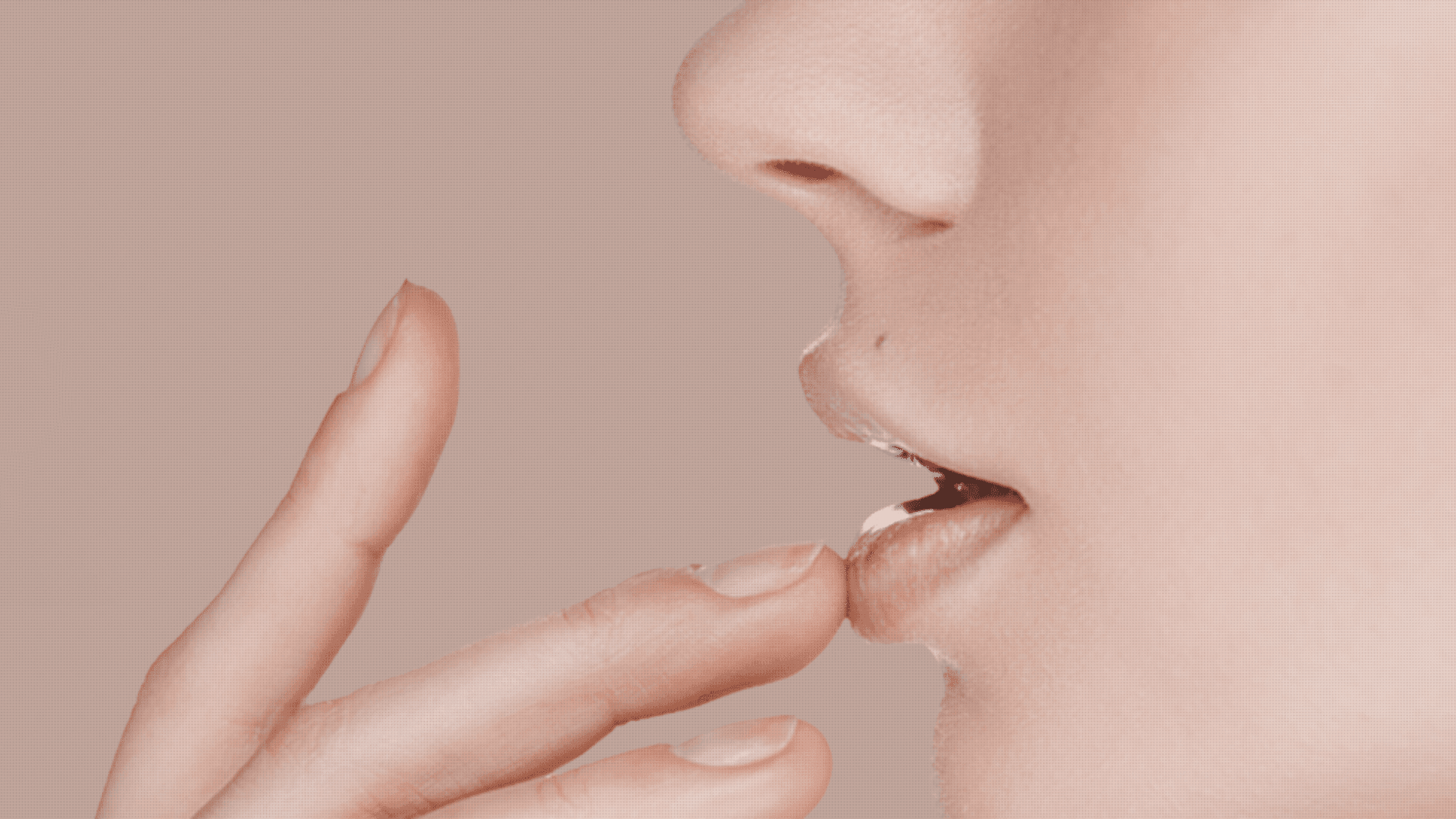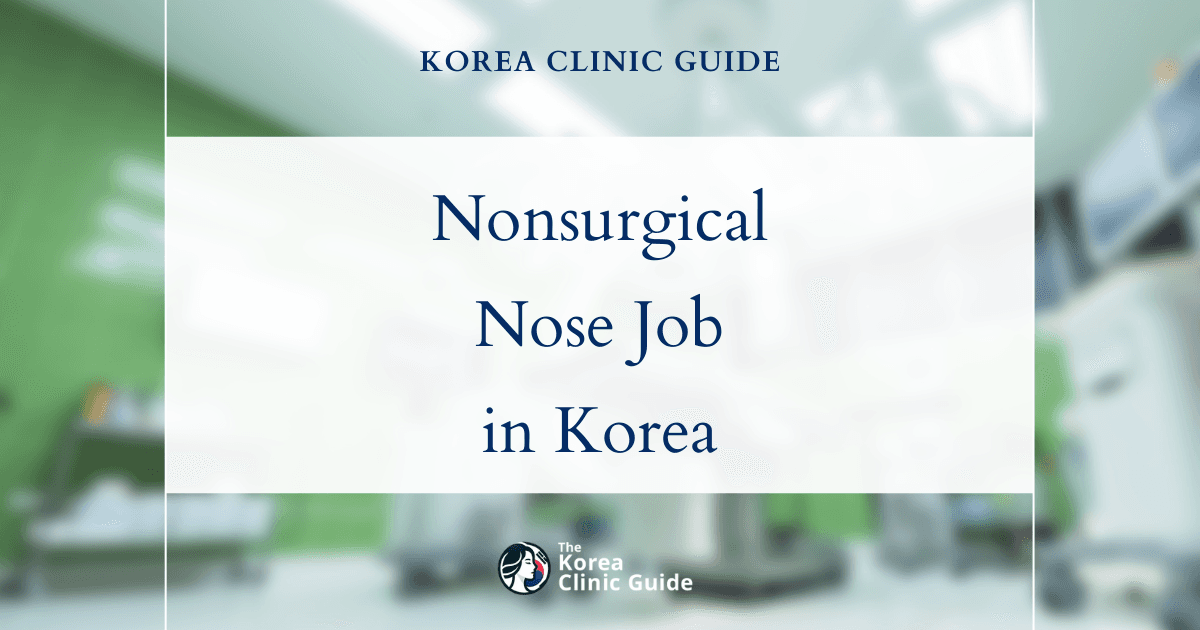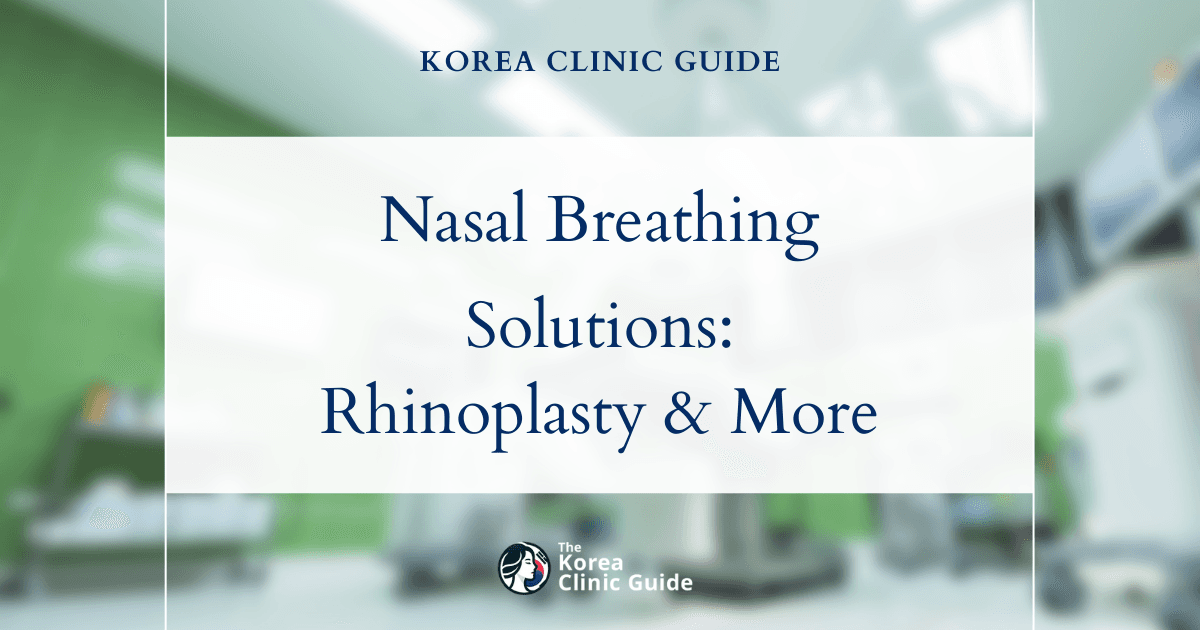Medical Tourism Blog
Septoplasty in Korea | Best Clinics, Costs, Procedure Types & More

Table of contents
- What Is Septoplasty?
- Best Septoplasty Clinics in Korea
- Septoplasty in Korea
- Alternatives to Septoplasty
- Conclusion
Have you ever struggled with constant nasal congestion or difficulty breathing through your nose? A deviated septum might be the culprit, and septoplasty has emerged as a trusted solution to these common yet disruptive issues. Discover why Korea is becoming the go-to destination for this life-altering procedure, renowned for its medical innovation and exceptional patient care.

What Is Septoplasty?
Septoplasty is a surgical procedure aimed at correcting a deviated nasal septum—a condition where the thin wall between the nasal passages (known as the septum) is displaced to one side. This deviation can lead to breathing difficulties, nosebleeds, and frequent sinus infections. The primary objective of septoplasty is to straighten the nasal septum, thereby improving airflow and resolving any associated symptoms.
Who Can Benefit from the Procedure?
Individuals suffering from a significantly deviated septum causing nasal obstruction are prime candidates for septoplasty. Common symptoms indicating the need for the procedure include:
- Chronic nasal congestion or obstruction
- Recurrent sinus infections
- Nosebleeds
- Headaches or facial pain
- Difficulty breathing through the nose, particularly during sleep
- Snoring or symptoms of sleep apnea
Patients not responding well to medications such as nasal steroids or those experiencing severe discomfort or complications from a deviated septum are often recommended to undergo septoplasty.
Types of Septoplasty Procedures
Septoplasty can be performed using various techniques, depending on the severity of the deviation and the surgeon's expertise.
-
Traditional Septoplasty: The surgeon operates through the nostrils, making an incision inside the nasal cavity to access and correct the septum. The displaced bone or cartilage is either repositioned or removed. Sutures or splints may be placed to stabilize the septum during healing.
-
Endoscopic Septoplasty: This modern approach uses an endoscope—a thin, flexible tube with a camera and light on the end. The endoscope provides a clear view of the nasal structures, allowing for more precise corrections with minimal invasiveness.
-
Laser-Assisted Septoplasty: In some cases, lasers are employed to make more accurate incisions and reduce bleeding. This technique is less commonly used but can be beneficial for minor deviations.
Pros and Cons
Like any surgical procedure, septoplasty comes with its set of advantages and potential drawbacks.
Pros:
-
Improved Breathing: Patients often experience significant relief from nasal obstruction, leading to better airflow and easier breathing.
-
Enhanced Quality of Life: Reduction of symptoms like chronic nasal congestion, recurring sinus infections, and headaches can drastically enhance daily comfort and quality of life.
-
Better Sleep: Correcting a deviated septum can alleviate breathing difficulties during sleep, reducing snoring and symptoms of sleep apnea for some individuals.
-
Minimal External Scarring: Since the procedure is usually performed entirely through the nostrils, external scars are rare, and the aesthetic appearance of the nose is largely unchanged.
Cons:
-
Surgical Risks: As with any surgery, septoplasty carries risks such as infection, excessive bleeding, reactions to anesthesia, and hematoma (blood clot formation).
-
Postoperative Discomfort: Swelling, bruising, and mild to moderate pain are common post-surgery, along with temporary nasal congestion due to internal swelling.
-
Possible Residual Symptoms: Some patients may experience a recurrence of symptoms if the septum shifts during healing or if not all contributing factors were addressed.
-
Recovery Time: Complete recovery can take several weeks, during which time physical exertion, nose-blowing, and certain activities may be restricted to ensure proper healing.
Septoplasty remains a valuable option for many individuals suffering from breathing impairments due to a deviated septum. Consulting with a qualified ENT specialist will help determine the most suitable approach and expected outcomes for each specific case.
Best Septoplasty Clinics in Korea
Listed below are the best clinics in Korea:
| Clinic Name | Key Features | Special Techniques |
|---|---|---|
| THEPLUS Plastic Surgery | Comprehensive approach, state-of-the-art facility, renowned surgeons | 3D implants, rhinoplasty revisions |
| Made Young Plastic Surgery | Blend of traditional beauty ideals and modern techniques, patient safety focus | Personalized treatments, innovative approach |
| Okay Plastic Surgery Clinic | Transformative aesthetic care, individualized treatment | Rhinoplasty services, body contouring, breast augmentation |
THEPLUS Plastic Surgery
THEPLUS Plastic Surgery clinic, located in the vibrant Garosu-gil area of Gangnam, Seoul, is a premier destination for those seeking top-tier cosmetic procedures, particularly septoplasty and rhinoplasty. The clinic is renowned for its comprehensive approach, offering a full range of services from initial consultations to post-operative care, all within its state-of-the-art facility. At the helm are Dr. Kim Taek Kyun and Dr. Jeong Jae Yong, both of whom are highly respected figures in the field of plastic surgery. Dr. Kim, a board-certified surgeon, is celebrated for his expertise in rhinoplasty and facial contouring, and is known for his research on 3D implants. His philosophy centers on achieving a harmonious balance of facial features to enhance natural beauty. Dr. Jeong, the President of the Korean Society of Plastic Surgeons, is a specialist in rhinoplasty revisions and is committed to integrating function with aesthetic appeal in his practice.
The clinic's dedication to excellence is reflected in its surgeons' active participation in academic research and international medical symposiums, ensuring they remain at the forefront of cosmetic surgery advancements. Dr. Kim and Dr. Jeong are not only practitioners but also educators, regularly conducting educational sessions for fellow surgeons to elevate industry standards. Their commitment to safety and patient satisfaction is evident in their meticulous approach and the personalized care they provide to each client. With a team of highly experienced professionals and a reputation for delivering exceptional results, THEPLUS Plastic Surgery clinic stands as a leading choice for those considering advanced cosmetic procedures in Korea.
You can check out their website here: THEPLUS Plastic Surgery Website
Made Young Plastic Surgery
Made Young Plastic Surgery Clinic, located in Seoul's renowned Gangnam district, is widely regarded as the premier destination for septoplasty in Korea. This clinic is celebrated for its exceptional blend of traditional beauty ideals and state-of-the-art surgical techniques, ensuring that each procedure is both safe and effective. With a strong emphasis on patient safety and care, Made Young stands out for its innovative approach to plastic surgery, offering personalized treatments that cater to the unique needs of each patient. The clinic's team of highly skilled plastic surgeons and medical staff are dedicated to delivering outstanding results, not only enhancing physical appearance but also boosting the confidence and overall well-being of their patients. Whether seeking to correct nasal obstructions or improve aesthetic appeal, patients can trust Made Young to provide the highest standards of care and transformative outcomes.
You can check out their website here: Made Young Plastic Surgery Website
Okay Plastic Surgery Clinic
At Okay Plastic Surgery Clinic, we are dedicated to providing a transformative approach to aesthetic care, particularly in the field of septoplasty in Korea. Our philosophy is centered around sincerity, precision, and individualized treatment, ensuring that each patient receives a solution tailored to their unique needs and aspirations. Our clinic is led by a team of specialized professionals, including a renowned female plastic surgeon with extensive experience, who guide patients through a comprehensive journey of personal transformation. This journey is supported by our expertise, empathy, and the use of cutting-edge medical techniques, making us a trusted choice for those seeking septoplasty and other aesthetic procedures.
Our clinic offers a wide range of specialized aesthetic services, meticulously designed to address diverse patient needs. From body contouring and breast augmentation to hairline correction and lifting procedures, we provide comprehensive solutions that enhance and refine our patients' natural beauty. Our rhinoplasty services, including nose tip surgery, nose bridge surgery, and nostril reduction, are particularly noteworthy for their precision and ability to achieve balance and symmetry. At Okay Plastic Surgery Clinic, we are committed to delivering exceptional results that not only meet but exceed our patients' expectations, ensuring a satisfying and transformative experience.
You can check out their website here: Okay Plastic Surgery Clinic Website
Septoplasty in Korea
South Korea has garnered international acclaim for its advanced medical technologies and highly skilled healthcare professionals. Patients traveling to Korea for septoplasty, a surgical procedure to correct a deviated septum, can expect a seamless and comforting experience from start to finish. Here's a detailed look at what you can expect:
Consultation and Planning
Your journey begins long before you arrive in Korea. Most clinics offer virtual consultations where patients can discuss their medical history, symptoms, and surgical goals with a qualified ENT (Ear, Nose, and Throat) specialist. These initial consultations are crucial for tailoring a treatment plan and providing you with an estimate of costs.
Arrival and Accommodation
Upon landing in Korea, many clinics offer concierge services to facilitate smooth transfers from the airport to your accommodation. Korea is home to numerous international-standard hotels and serviced apartments, many of which are situated conveniently close to medical facilities, ensuring easy access for pre- and post-operative visits.
Pre-Operative Evaluations
In Korea, attention to detail is paramount. Before your septoplasty, you'll undergo a series of pre-operative evaluations, including imaging studies like CT scans and nasal endoscopy. These tests help the surgeon to understand the specific anatomy of your nasal structure and plan the surgery accordingly.
The Surgical Experience
Korean hospitals and clinics are renowned for their state-of-the-art facilities and meticulous hygiene standards. Your surgery will be carried out in a fully equipped operating room by a team of expertly trained medical staff. Most septoplasties are performed under general anesthesia to ensure your comfort and safety.
Post-Operative Care
Post-operative care in Korea is exceptionally comprehensive. After surgery, you'll typically stay a night or two in the hospital for monitoring. The healthcare team will provide you with detailed instructions and medications to manage pain and reduce the risk of infection. Many clinics also offer follow-up visits to track your recovery progress.
Recovery and Sightseeing
Septoplasty recovery generally involves some swelling and discomfort, which subsides in a week or two. During the recovery period, you can explore Korea's rich cultural landscape. Many medical tourists take this time to visit landmarks like Gyeongbokgung Palace, Namsan Tower, and the bustling streets of Myeongdong. However, it's essential to follow activity guidelines provided by your surgeon to ensure a smooth recovery.
Language and Communication
Language barriers are often a concern for medical tourists, but many Korean clinics have English-speaking staff and offer translation services. This ensures clear communication and helps alleviate any anxieties you might have about the procedure or your stay.
Cost and Insurance
Septoplasty in Korea tends to be more affordable compared to many Western countries, without compromising on quality. Some clinics also assist with medical tourism insurance to cover any unexpected contingencies, giving you peace of mind during your stay.
Final Checks Before Departure
Before you return home, you'll have a final check-up to ensure everything is healing as expected. Your surgeon will offer personalized aftercare advice and a detailed report of the procedure, which can be shared with your local healthcare provider for continued care if necessary.
In summary, choosing Korea for your septoplasty ensures that you're opting for a country known for its advanced medical services, patient-centered care, and world-class hospitality.
Alternatives to Septoplasty
1. Nasal Steroid Sprays
Nasal steroid sprays are a non-invasive alternative to septoplasty that can help reduce inflammation and congestion in the nasal passages. These sprays contain corticosteroids, which work to decrease the swelling and mucus production in the nasal tissues. This method is especially useful for those who have mild to moderate nasal obstruction due to allergic rhinitis or sinusitis.
Benefits:
- Non-invasive and easy to use.
- Can be used long-term under medical supervision.
- Effective in reducing nasal inflammation and improving airflow.
Limitations:
- May take several days to weeks to show full effect.
- Potential side effects include nasal dryness, bleeding, and irritation.
- Not a permanent solution for structural issues like a deviated septum.
2. Balloon Sinuplasty
Balloon sinuplasty is a minimally invasive procedure that is often used to treat chronic sinusitis. During this procedure, a small, flexible balloon catheter is inserted into the blocked nasal passages and then inflated to open up the sinus pathways. This technique can improve airflow and drainage, providing relief from nasal congestion.
Benefits:
- Minimally invasive with a quicker recovery time compared to traditional surgery.
- Can be performed in an outpatient setting.
- Effective in reducing sinus symptoms and improving nasal airflow.
Limitations:
- Not suitable for structural deformities like a severely deviated septum.
- Potential for temporary discomfort and bleeding.
- May need to be repeated if symptoms recur.
3. Turbinate Reduction
Turbinate reduction is a procedure that aims to reduce the size of the turbinates—small, bony structures inside the nose that help filter and humidify the air we breathe. Enlarged turbinates can lead to nasal obstruction. This can be done through various techniques such as radiofrequency reduction, microdebrider reduction, or coblation.
Benefits:
- Can significantly improve nasal airflow and breathing.
- Less invasive with quicker recovery time than septoplasty.
- Can be done in conjunction with other nasal procedures if needed.
Limitations:
- Does not address issues with the nasal septum itself.
- Potential side effects include bleeding, infection, and crusting.
- Results can vary depending on the method used and the severity of turbinate hypertrophy.
Each of these alternatives offers a different approach and set of benefits, making them suitable for different patients depending on the underlying causes of their nasal obstruction. Always consult with a healthcare provider to determine the most appropriate treatment for your specific condition.
Conclusion
In conclusion, undergoing septoplasty in Korea offers patients a combination of advanced medical technologies, skilled surgeons, and high standards of care. The country's healthcare system is renowned for its efficiency and patient-centric approach, making it an ideal destination for this type of nasal surgery. Coupled with the cost-effectiveness and the availability of comprehensive post-operative care, patients can expect both a high success rate and a comfortable recovery process. If you're considering septoplasty, Korea stands out as a top option for achieving both functional and aesthetic improvements to your nasal passages.















